An egg wash is a mixture of an egg and liquid that is most commonly brushed on a pastry before baking. This egg wash tutorial demonstrates how to make and use an egg wash to get your best-desired result.
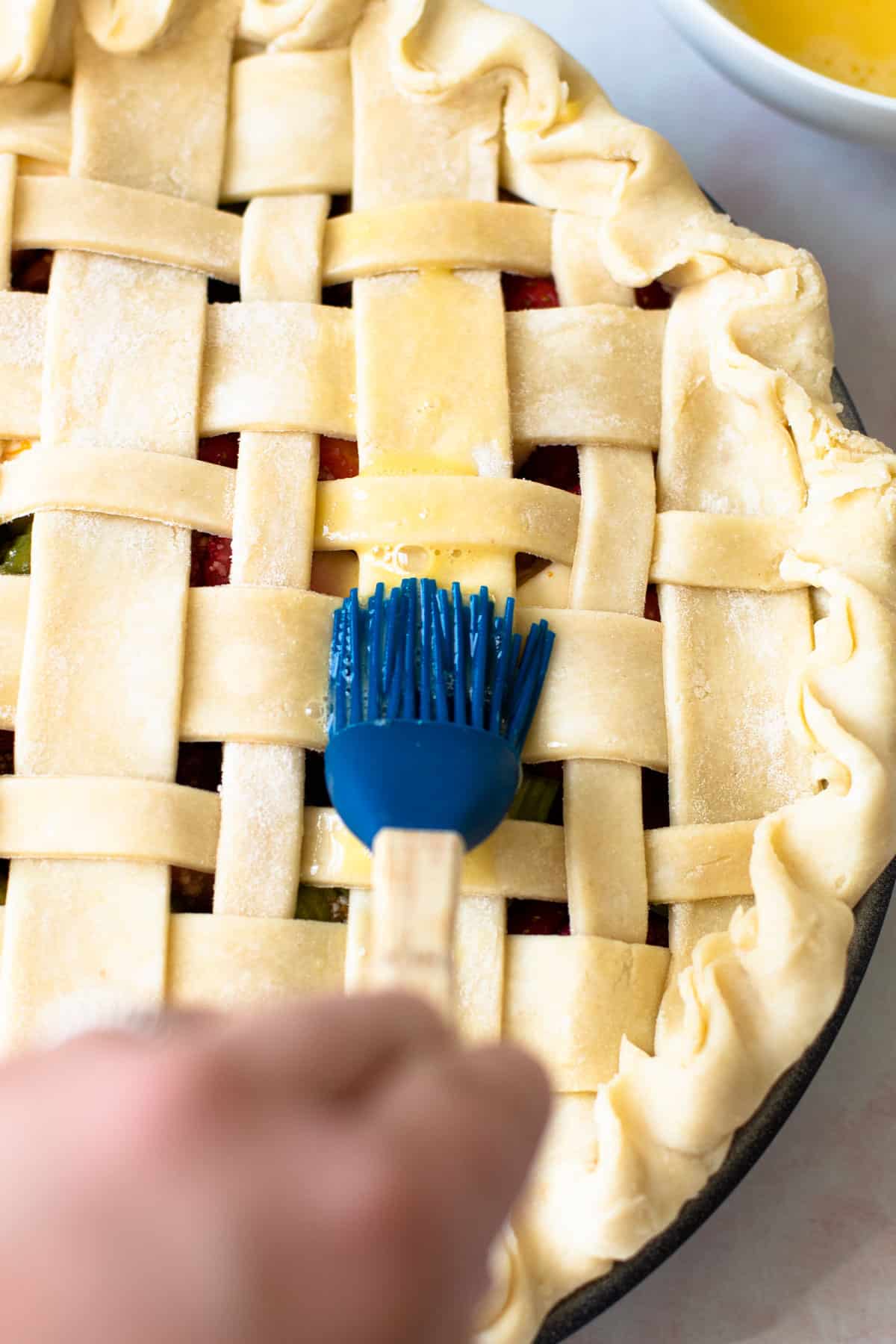 How to Make an Egg Wash for Pastry
How to Make an Egg Wash for Pastry
Have you ever encountered a recipe that called for an egg wash without any more directions and been totally confused? This guide to making and using an egg wash should answer all your questions! This is essential skill when looking to master that art of pastry and bread baking, and is really quite simple.
Reasons for Using an Egg Wash
An egg wash has two main purposes.
The first is that it creates a pleasing look to your baked goods! Brushing an egg wash on a pastry not only lends it a nice golden color, but it also gives it an appealing shine.
The second is that it acts as a glue. It can either help something stick to the pastry such as sugar, or help pastry stick together, such as in this Pop Tart recipe.
Types of Egg Wash to Make
Alright, let's get into all the different types of egg wash you can make, including some of them that don't even have eggs in them! I'll also share the go-to eggwash that I use for nearly everything.
Only Egg
Brushing on just a whisked egg will lead to a darker golden brown baked good, with a medium amount of shine.
Only Egg Yolk
Brushing on just a whisked egg yolk will lead to a deep golden browned baked good, with a good shine.
Only Egg White
Brushing on egg white will lead to a paler baked good with a very good shine. An egg white only egg wash is useful for brushing on the bottom of blind-baked pie crusts to create a watertight barrier between the filling and the crust. Or it can be used to help sugar adhere to pastry.
Egg and Water
Brushing on egg whisked with water will lead to a golden brown baked good, with a medium amount of shine. I consider this an all-purpose eggwash and it is the one I most frequently turn to.
Egg and Milk or Cream
Brushing on egg whisked with milk or cream will lead to a lighter golden brown baked good, with a good amount of shine.
Only Milk or Cream
This is commonly used for brushing on top of biscuits, or some pies. It leaves the baked pastry with a finished look that is slightly shiny without adding any browning.
 Different Types of Pastry Brushes
Different Types of Pastry Brushes
It is best to use the more modern silicone pastry brush for one primary reason: it's easy to clean. While it's nice to use the traditional pastry brushes with natural bristles, it is difficult to consistently keep it clean, especially if you are using it for an egg wash. Silicone pastry brushes can go in the dishwasher and get thoroughly clean after applying an egg wash.
Tips for Applying Egg Wash
- Make sure to whisk your egg together very well, especially if you are using only an egg without any added ingredients. If you don't spend some time whisking it together well, it can be applied unevenly.
- Don't overdo it. Applying a thick layer of egg wash often leads to uneven shine, or possibly even burnt patches on your pastry.
- Take your time brushing it on. If you rush through it, you can make a mess, and get the egg wash everywhere. Lightly apply the egg wash and take your time to brush it evenly on all the areas you want it. Try to avoid dripping egg wash anywhere you do not want it.
- Want an extra golden brown color? You can apply a double layer of egg wash. One at the beginning of the baking period, and one about 10 minutes before the baked good is set to be done.
More Baking Tips:
Full Recipe
Basic Egg Wash
An egg wash is a mixture of an egg and liquid that is most commonly brushed on a pastry before baking. This egg wash tutorial demonstrates how to make and use an egg wash to get your best-desired result.
- Prep Time: 00:02
- Total Time: 00:02
- Category: Baking Tips
Ingredients
- 1 large egg
- 1 tablespoon water or milk
Instructions
- Crack an egg into a small bowl and add the water or milk. Beat the egg and the water together thoroughly.
- Using a pastry brush, brush the egg wash in a thin even layer onto your pastry.
Notes
For a lighter, slightly shinier sheen use cream.
Some of the links on this page may be affiliate links. Everyday Pie is a participant in the Amazon Associates Program. As an Amazon Associate I earn from qualifying purchases, at no extra cost to you.
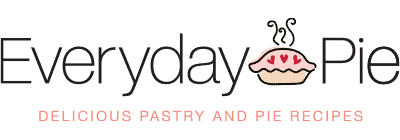

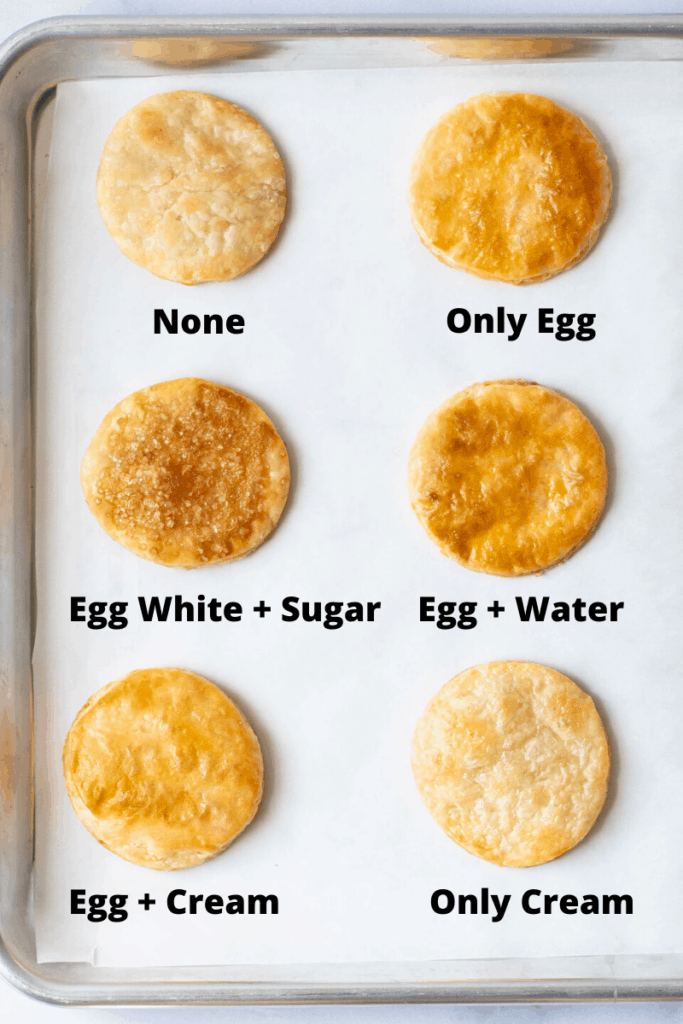
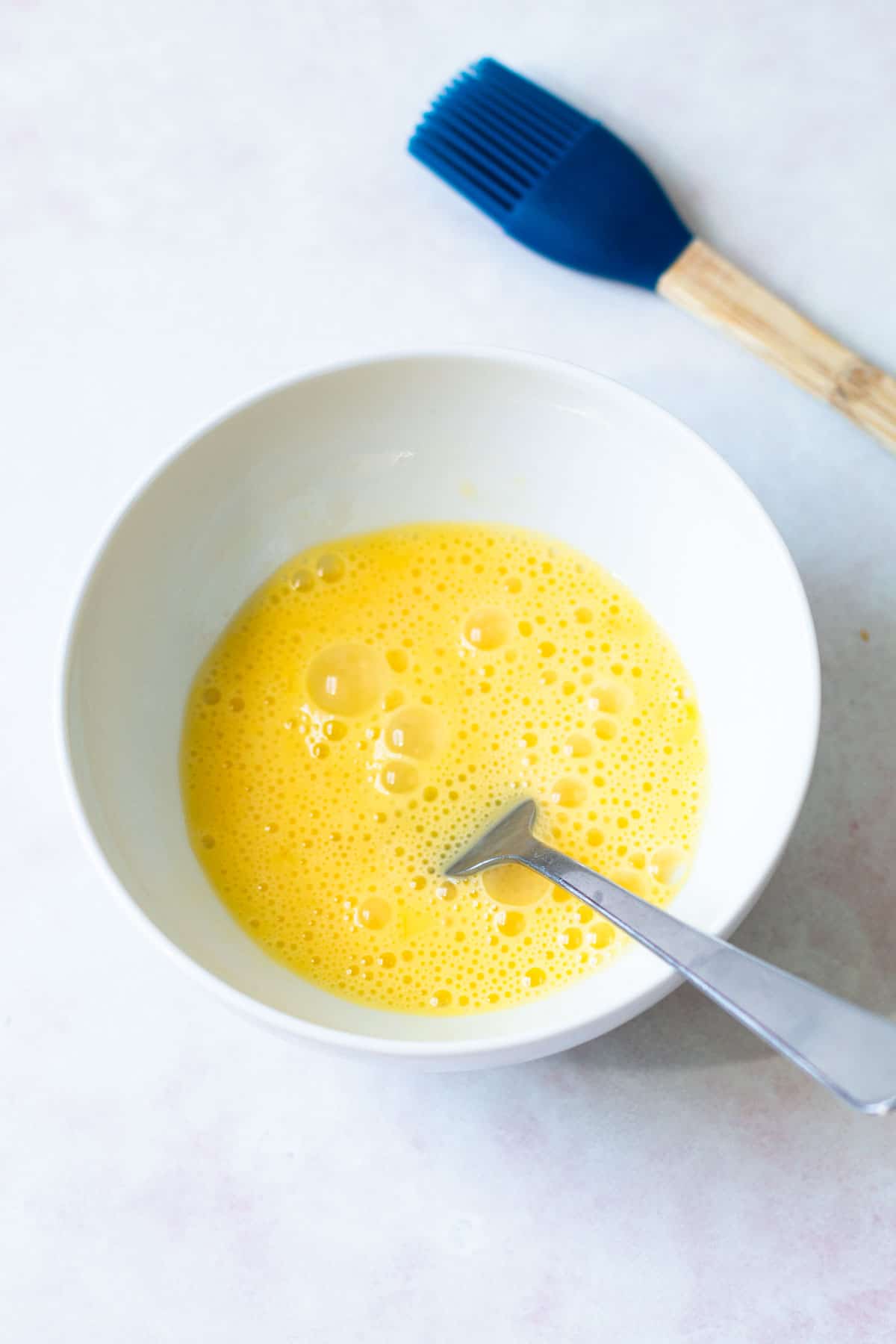
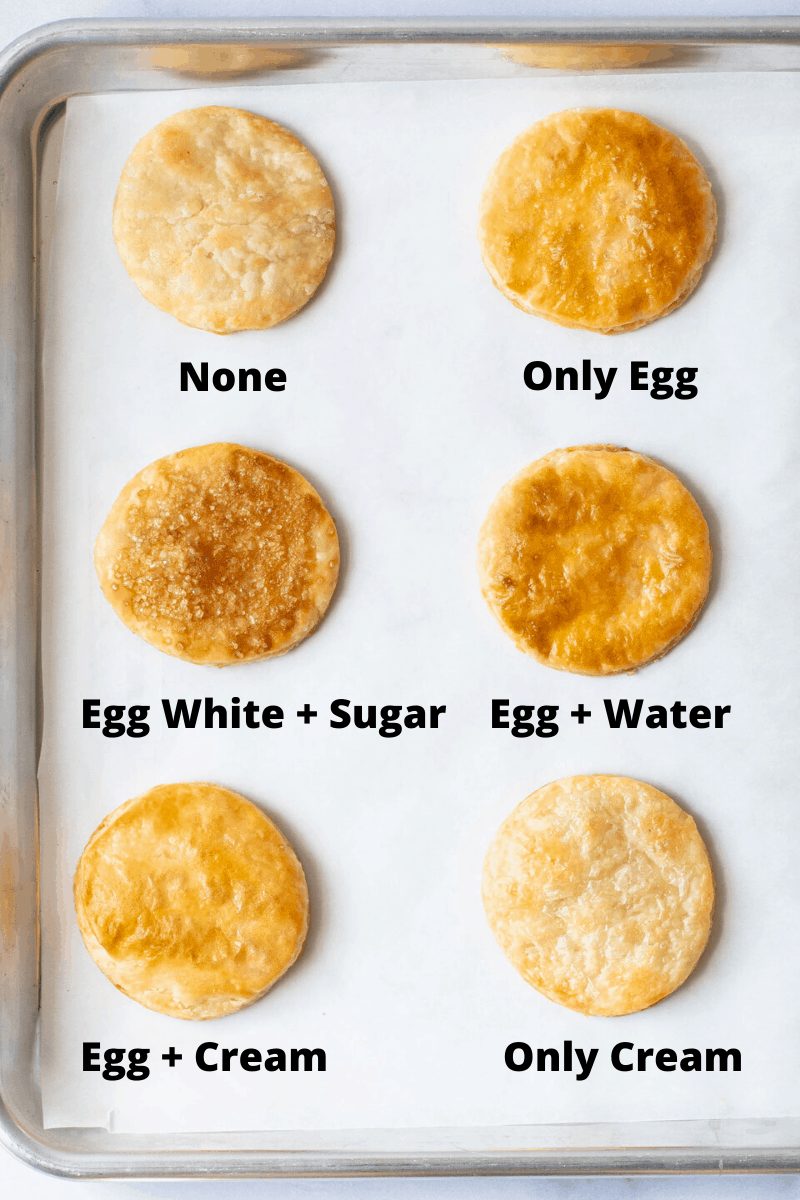
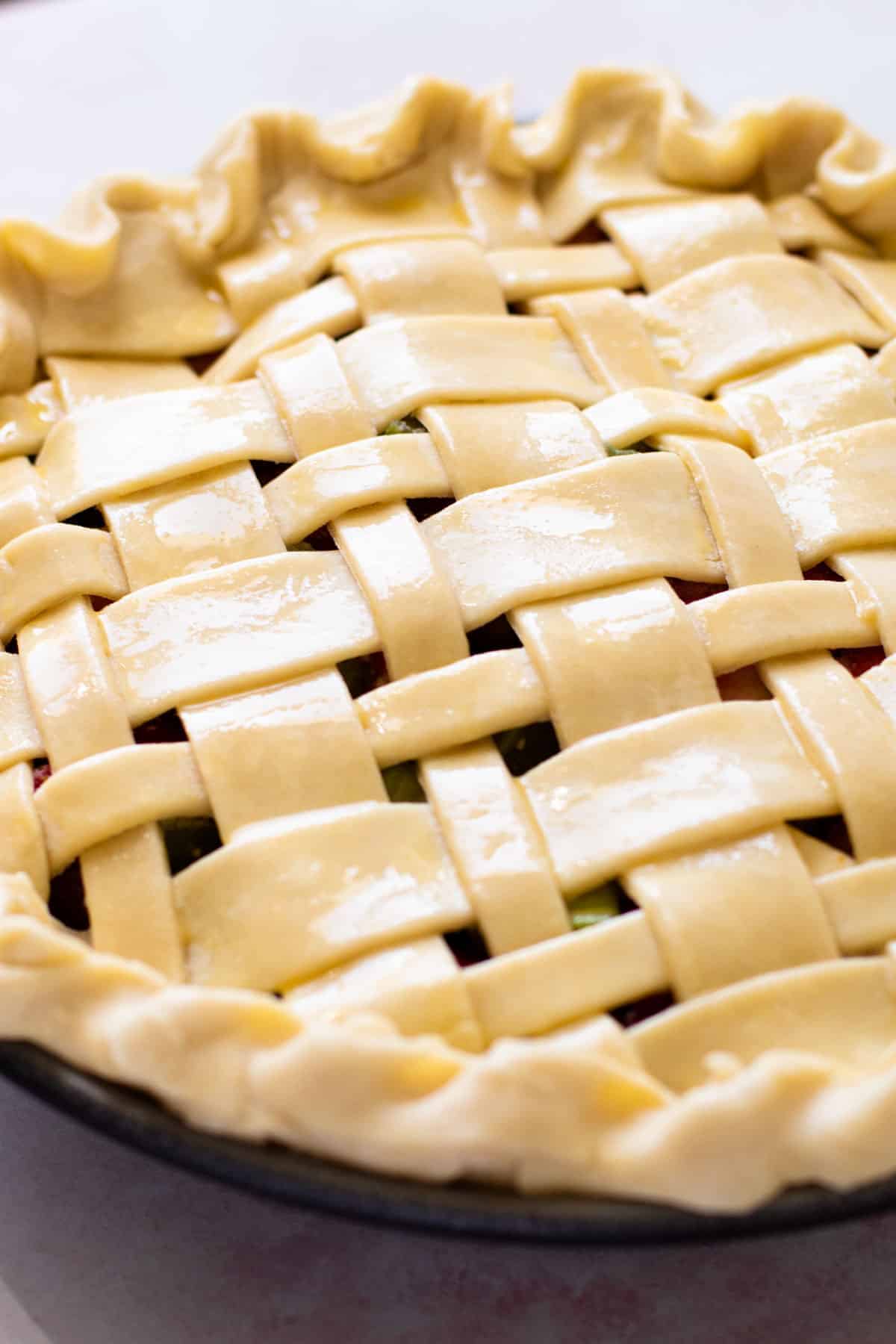 Different Types of Pastry Brushes
Different Types of Pastry Brushes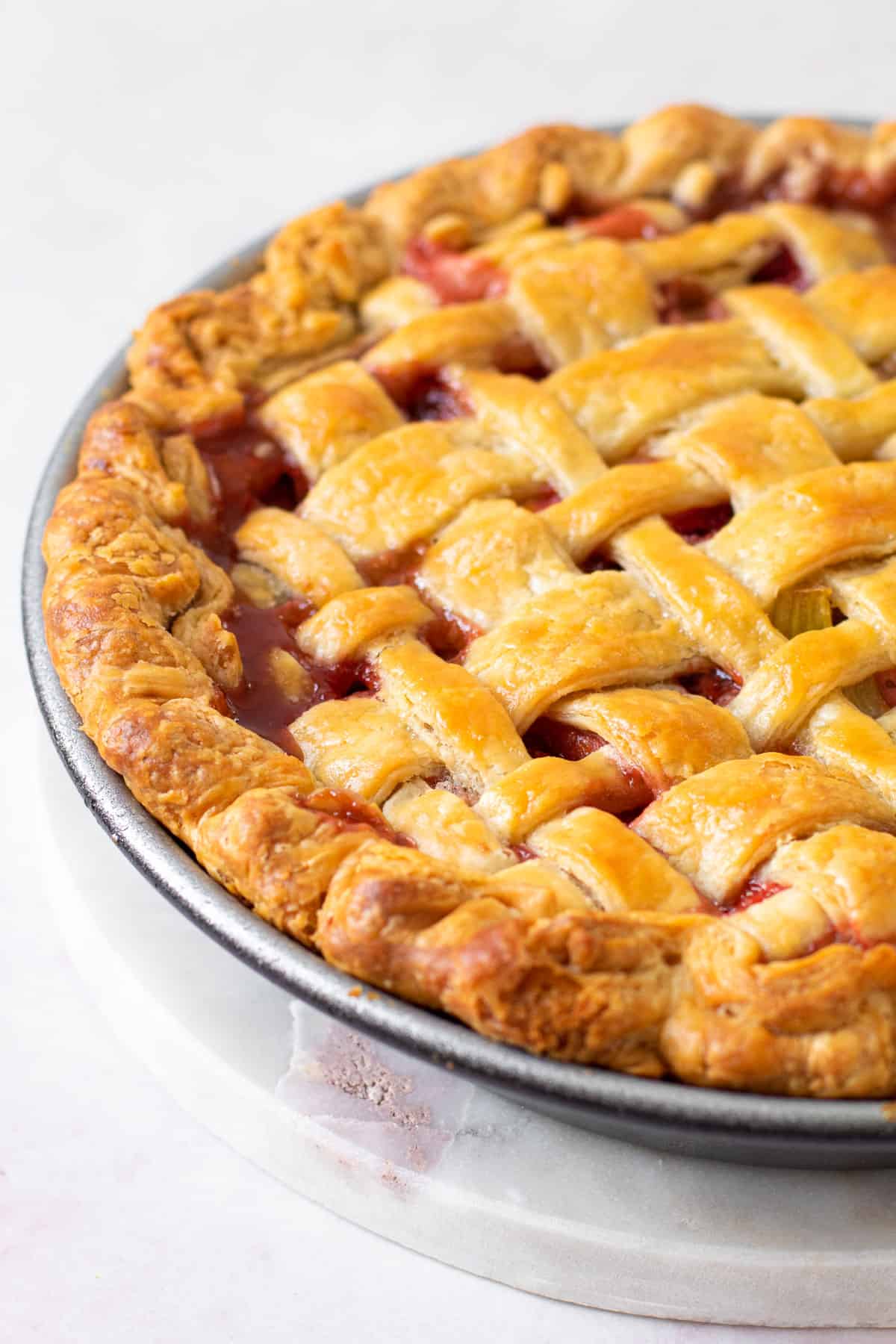
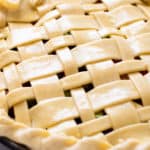
Rosemary Meese
Great Reicipe
What causes white looking crust?
DIANNE LEVITT
Thank you so much. I was looking for the process to make egg was and how to use it. I was sent to many other sites for this information without actually getting any. Thank you again for you help. LOVE & LIGHT
Mary Jean Williams
Very helpful article on washing with eggs in baking! Thank you for taking the time to research and print. I may have missed this, but I am wondering if I were to use an egg white and water wash on already baked sugar cookies and then sprinkle them with sanding sugar, should I rebake them for five minutes in maybe a 225 oven to make the egg white safer to eat? I know most recipes don’t say to do that, but I am overly concerned, especially since I will be serving these cookies to kids or would I be better off using just milk and re-baking them after washing in Spring San with sugar for the same five minutes 325°?
Ginger Zien
Wonderful information!
Thank you
Mark
I understand to bake the pie crust empty with pie crust weights then apply the egg wash. After removing the crust from the oven, should the crust be allowed to cool before applying the egg wash or immediately apply the egg wash and the place the crust in the oven again?
Mary Super
I followed the recipe. After par baking the crust, I removed the pie weights and parchment paper, then poked the bottom of the crust with a fork then brushed with egg white wash. I still get a soggy crust. What am I doing wrong? Thanks.
Kelli Avila
After removing the pie weights, did you put it back in to bake for a few more minutes? Also---have you ever checked your oven temperature? Perhaps it's a bit off. Always go with the look of the pie vs. how many minutes you baked it if a recipe gives you that information.
Susan Bristow
I
I've made pie crust all of my life but never applied an egg wash. I used one of your recipes for it and loved the results. I'll never make another pie without it. Thank you so much!
Pat Greenwood
Thanks very much for the info! I learned more than I was asking about and am grateful!
Kelly Newton
I have been baking for over 30 years and have never used an egg wash. I haven't seen many recipes that call for it either. Your explanation of each kind is beyond helpful!! Thank you for taking the time to do that for those of us who needed to know!
Tiffany Bryant
This information was incredibly helpful. You really helped by showing how each type of wash would pan out on the crust after baking. Really cool idea. I am keeping this page on my favorite recipe list!
missy stagmiller
five star Wow !.....super HELPFUL Information ! good for you , awesome for me! After many years of baking pies, i never knew there were so many different techniques! Thank YOU! I ESPECIALLY LOVE the PICTURES!! Ps. Did, not realize silicone brushes were good to use either !!
Mark
For a sugar egg wash, how much sugar and what kind should be added?
Kelli Avila
I like to use raw sugar, or turbinado sugar. There is no certain amount, but a liberal sprinkle is good.
Lisa Biesinger
Thank you very much for this clear and thorough description of egg washes, what kinds there are, what they do and how to use them. With pictures! Absolutely perfect!
And of course they are not only useful for pies - I got here because I was wondering why my Swedish cinnamon roll recipe (Kanelbullar) wanted me to brush with whole egg and not just egg yolk and water or egg yolk and cream like some other recipes I've seen. Now I know what they expect out of it, a deep rich brown, which will glue the sugar topping better because of the egg white component. Thanks!
Kelli Avila
Thanks for sharing, Lisa! I'm so glad it was helpful!
kate
Super helpful to know the difference between egg washes
Orpington
I like it!